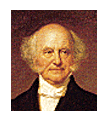Whats the tallest building in the world?
Answer:The library,because it has a lot of stories.
Monday, June 11, 2007
Joke of day
Posted by
Cool TrickMaster
at
Monday, June 11, 2007
![]()
![]()
Labels: the trickmasters.blogspot.com
word of the day
Today: Chat with Julie Barlow, co-author of "The Story of French" and * "Sixty Million Frenchmen Can't Be Wrong" at http://wordsmith.org/chatThis week's theme: expressions coined after the names of birds.kibitz (KIB-its) verb intr. 1. To look on at some activity and offer unwanted advice or criticism. 2. To chat or banter.
Posted by
Cool TrickMaster
at
Monday, June 11, 2007
![]()
![]()
Labels: the trickmasters.blogspot.com
Math of day
What is 1890-1234=?
Answer:656
Posted by
Cool TrickMaster
at
Monday, June 11, 2007
![]()
![]()
Labels: the trickmasters.blogspot.com
Jet breaks sound barrier
Many people have heard a sonic boom, but few have seen one. Here is a plane that is breaking through the sound barrier.
An F/A-18 Hornet assigned to Strike Fighter Squadron One Five One (VFA-151) breaks the sound barrier in the skies over the Pacific Ocean, July 7, 1999. VFA-151 is currently deployed with USS Constellation.
U.S. Navy photo by Ensign John Gay, photo officer for Fighter Squadron Two (VF 2), shot this image from the 0-10 level weather deck (the uppermost deck on the island) of USS Constellation. It was shot with a Nikon N-90s with a Nikon 70-300 ED zoom lens, using Kodacolor 200 negative film. The camera was set for manual exposure of F/5.6 at 1/1000 sec. The image was acquired with a single shot, panned from left to right, prefocused at approximately 200-300 yards off the port side of the ship, where the aircraft flew by. This image has appeared in many publications worldwide.
When an airplane travels at a speed faster than sound, density waves of sound emitted by the plane cannot precede the plane, and so accumulate in a cone behind the plane.
When this shock wave passes, a listener hears all at once the sound emitted over a longer period: a sonic boom. As a plane accelerates to just break the sound barrier, however, an unusual cloud might form. A leading theory is that a drop in air pressure at the plane occurs so that moist air condenses there to form water droplets.
Here is a copy of an article I found on the net by: Bruce Stephen Holms Awesome - Wanna see a sonic boom?
Through the viewfinder of his camera, Ensign John Gay could see the fighter plane drop from the sky heading toward the port side of the aircraft carrier Constellation. At 1,000 feet, the pilot drops the F/A-18C Hornet to increase his speed to 750 mph, vapor flickering off the curved surfaces of the plane. In the precise moment a cloud in the shape of an egg forms around the Hornet 200 yards from the carrier, its engines rippling the Pacific Ocean just 75 feet below, Gay hears an explosion and snaps his camera shutter once.
"I clicked the same time I heard the boom, and I knew I had it", Gay said. What he had was a technically meticulous depiction of the sound barrier being broken July 7, 1999, somewhere on the Pacific between Hawaii and Japan. Sports Illustrated, Brills Content, and Life ran the photo.
The photo recently took first prize in the science and technology division in the World Press Photo 2000 contest, which drew more than 42,000 entries worldwide.
"All of a sudden, in the last few days, I've been getting calls from everywhere about it again. It's kind of neat," he said, in a telephone interview from his station in Virginia Beach, VA.
A naval veteran of 12 years, Gay, 38, manages a crew of eight assigned to take intelligence photographs from the high-tech belly of an F-14 Tomcat, the fastest fighter in the U.S. Navy. In July, Gay had been part of a Joint Task Force Exercise as the Constellation made its way to Japan.
Gay selected his Nikon 90 S, one of the five 35 mm cameras he owns. He set his 80-300 mm zoom lens on 300 mm, set his shutter speed at 1/1000 of a second with an aperture setting of F5.6. "I put it on full manual, focus and exposure," Gay said. "I tell young photographers who are into automatic everything, you aren't going to get that shot on auto.
The plane is too fast. The camera can't keep up." At sea level a plane must exceed 741 mph to break the sound barrier, or the speed at which sound travels. The change in pressure as the plane outruns all of the pressure and sound waves in front of it is heard on the ground as an explosion or sonic boom. The pressure change condenses the water in the air as the jet passes these waves. Altitude, wind speed, humidity, the shape and trajectory of the plane - all of these affect the breaking of this barrier. The slightest drag or atmospheric pull on the plane shatters the vapor oval like fireworks as the plane passes through, he said everything on July 7 was perfect.
"You see this vapor flicker around the plane that gets bigger and bigger. You get this loud boom, and it's instantaneous. The vapor cloud is there, and then it's not there. It's the coolest thing you have ever seen."
Compiled and edited by: Bertho Boman Vinland Corporation 25-Aug-2002
Posted by
Cool TrickMaster
at
Monday, June 11, 2007
![]()
![]()
Labels: the trickmasters.blogspot.com
Plane and the sun
 Sometimes, good planes come to those who wait. Experienced solar photographer Thierry Legault had noticed planes crossing in front of the Sun from his home in suburban Paris. He then got the idea for the above photograph, but had to wait through many near misses.
Sometimes, good planes come to those who wait. Experienced solar photographer Thierry Legault had noticed planes crossing in front of the Sun from his home in suburban Paris. He then got the idea for the above photograph, but had to wait through many near misses.
On January 13, 2001, he got his wish: A jet crossed directly in front of the Sun when his solar imaging equipment was set up. The resulting image, shown above, was taken in a specific color of red light called Hydrogen-Alpha, and the picture's contrast has been digitally enhanced. Dark prominences can be seen lacing the Sun's busy surface. The airplane is an MD-11.
The picture was selected by NASA as the Astronomy Picture of the Day on January 29, 2001. Here is the link to the source and many more fantastic pictures: Thierry Legault Home Page
Compiled and edited by: Bertho Boman Vinland Corporation 26-Aug-2002
Posted by
Cool TrickMaster
at
Monday, June 11, 2007
![]()
![]()
Labels: the trickmasters.blogspot.com
Fligt sight near the moon
 I, folks here is a amazing sight done on jan, 3, 01 and comes with a description by the photographer.I waited a year or two to get a "contrailed" plane during the late afternoon thru a moon.
I, folks here is a amazing sight done on jan, 3, 01 and comes with a description by the photographer.I waited a year or two to get a "contrailed" plane during the late afternoon thru a moon.
''On the 3rd of January, 2001, I watched as many "high flyin' jets" missed the moon at aproximately 3:45 PM then I left the vantage point where I was shooting (The Boston Herald rear parking lot). While driving to the front parking lot where my assigned parking space is, I noticed a jet in a different position. Entering the US East coast at Boston, this jet was a little more south than the others, so I rushed back to the original spot, knowing there was only a minute before it would come near the moon.
I positioned my lens, a 600mm with a 2x teleconverter, and a Canon digital camera (making it an 1800mm lens), against a jeep and held my breath when it seemed the plane was going to miss. I prefocused on the moon. I had the Canon camera at 1/200th on shutter priority and 3/4 of a stop of overexposure. That gave me about 1/125 at F8 at 400ASA. Then with about five seconds before it "hit" the moon, I looked into my camera and could not find the moon. I found the moon with a second left and the first picture I made had some motion blur. The second picture is the one we are discussing. In the third picture, the plane is sharp due to a bit of panning and the moon is out of focus.
I was shaking due to the pure excitement of the chance encounter the plane had with the moon. It was a beautiful sight. I drove back and walked into the Herald shaking. I had viewed the back of the camera in the car and all I needed to find out now was: was it sharp. Well, I had a bit motion blur and a bit of the softness that one gets with digital before the sharpening. I did sharpen it moderately. The problem that I had, was the white jet's highlights tended to blow out in splotches. The plane was an Air India Boeing 747.
If anybody would like to check out the other photo (split second after this photo) it is posted on: http://www.airliners.net/
You can search my name and press "show me the photos". I have over 100 aviation photos on this cool web sight. I am an aviation buff......
Mark Garfinkel Staff Photographer The Boston Herald
Compiled and edited by: Bertho Boman Vinland Corporation 25-Aug-2002
Posted by
Cool TrickMaster
at
Monday, June 11, 2007
![]()
![]()
Labels: the trickmasters.blogspot.com



































































